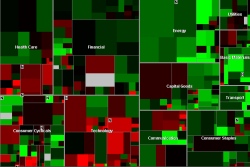Music plays a large role in the Winter holidays, Christmas especially. As popular music turned to rock and roll, it was still part of the family. It played the role of the rebellious teenager— but it still resided well within the boundaries of the nuclear family. In 1963, the Beatles joined the family for Christmas with an out-of-band message delivered through the special channel of the fan club.
As ‘Rock and Roll’ lost its ‘Roll,’ left home and 1960s exploded, Christmas was left behind. The family holidays were left to the ‘family-oriented‘ music acts. As Rock music matured and started families, Christmas returned as a theme. But the new songs didn’t attempt to regain innocence; the real world and the politics of the times couldn’t be kept out of the sound. As we look back across the span of popular music, it’s interesting to observe which artists and styles of music intersect with the Christmas holidays.

The Beatles Christmas message made use of a very simple and direct technology. There seemed to be little more than a microphone, a tape recorder, the band and a loose script outline. This kind of casual production method was a far cry from the intense rehearsals and refined production methods of George Martin. The off-the-cuff nature of the message makes the communication all the more genuine; we don’t feel as though it’s constructed for our entertainment, but rather an actual message.
The sophistication of video and sound production has grown tremendously over the years. Its costs have skyrocketed, and then plummeted to an almost commodity level. By chaining together a Flip video camera, the Network and YouTube Christmas theatricals can be produced and distributed easily. The cost of the idea and the time to produce them far outweigh the cost of the technology.
Aimee Mann has left the recording industry cartel to become an independent microcaster. She records albums, tours with her band, and is one of the artists who has intersected with Christmas. Each year, for the last few, she’s put on a special Christmas show. Without the heavy machinery of the record labels, Mann has found ways of connecting with her audience using low-cost and no-cost technical tools. The production costs are low, but the communication/connection value is very high. This combination of high and low modes of production is a new model for all forms of mass media. Even newspapers have become broadcast networks, a printed paper is just one output of the content.
It’s a much more straightforward proposition for a performer to construct a persona for the highly produced recording. Like the transition from silent film to talkies, it’ll be interesting to see which performers still shine off-the-cuff and on-the-run. But mastery of low tech production modes is only one element of the equation. Video isn’t a one-way medium any longer. Messages can travel in both directions, and the best performers know how to listen.
3 Comments

